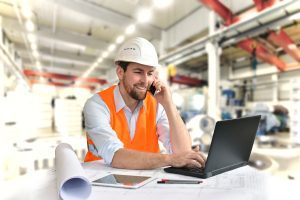Climate is what we expect, weather is what we get, according to humorist and author Mark Twain.
Builders of outdoor control panel enclosures can benefit from that. By accounting for prevailing weather conditions, they can avoid over- and under-specification. They can then reduce costs while improving performance. (For tips on how to do this for indoor enclosures, see my earlier post “How to Avoid Spec Bloat in Panel and Cabinet Design Work”).
In this first of a three-part series, I’ll talk about how to account for weather conditions. The second post will look at installation constraints while the last will consider the interaction between enclosures and people.
For now, though, let’s get back to the weather.
Traditionally, outdoor enclosures have been oversized and over-specified. In part, that’s because the weather was ignored.
My experience is that you cannot do that. You must first know what the weather conditions are and then you can come up with the best solution, including whether thermal management should be by active or passive means. That thinking shows up in Schneider Electric’s line of outdoor heavy duty enclosures.
Perhaps the biggest difference in doing this optimization for an indoor enclosure and an outdoor one is the Sun. The amount of sunlight that falls on an enclosure will vary by location, with this map of the world showing the ratio can be close to 4:1. Sunny spots in Australia, the Middle East, South America and North America get much more sunlight than areas in Canada and Europe. And that doesn’t even consider the effect of the shade of buildings or trees.
So, what does that mean to an outdoor enclosure? Well, it gets hotter the greater the sunlight, all things being equal.
To combat this, choose the color of the enclosure carefully. A white enclosure absorbs 18 percent of the heat striking it from the outside, which can be beneficial in a place where sunny weather is the norm. On the other hand, a black enclosure absorbs up to 94 percent of ambient light, possibly beneficial in a cloudy or cool climate.
In addition to color, the choice of materials is important. Here, there is no simple black-and-white answer. Many materials may work, provided that the walls are sized to account for the weather-induced heat load. In general, the most optimized materials are polymers, corrosion treated steel and stainless steel, as can be seen in our new outdoor heavy duty enclosure offer.
But, weather is subject to change and the variation can be large. For instance, in parts of Russia the temperature ranges from -40o C in the winter to +35o C in the summer. Such seasonal and predictable weather swings must be anticipated and designed for.
In parts of Asia the issue may be humidity, leading to condensation. Consider an enclosure containing computers and other heat-producing electronics that shut off at night. With relative humidity approaching 100 percent, it doesn’t take much for condensation to appear when a heat source goes away. The solution here may be a heater and humidity control inside the enclosure.
Corrosion resistance is important for an enclosure anywhere. It’s best to use a polymer because a composite plastic is corrosion resistant. If it’s not possible to do so, make sure that all metallic parts are well protected against corrosion.
For more information, consult our Outdoor Technical Guide: How to define the right outdoor solution and optimize its durability. There’s also a video you can watch on outdoor heavy duty control panel solutions. And you can use our ProClima software to guide you in making the right selection for your outdoor enclosure project.
Armed with that knowledge, you’ll be able to talk about the weather and do something about it – a twist on another saying attributed (it turns out incorrectly) to Mark Twain.


